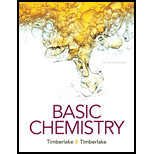
Concept explainers
(a)
Interpretation:
The common names of the given compound should be determined.
Concept Introduction:
The group that contains a nitrogen atom attached to one or more carbon atoms is said to be an amine group, general representation of an amine group is R1R2R3-N.
The common name of
(b)
Interpretation:
The common names of the given compound should be determined.
Concept Introduction:
The group that contains a nitrogen atom attached to one or more carbon atoms is said to be an amine group, general representation of an amine group is R1R2R3-N.
The common name of amines are derived by naming the alkyl groups bonded to nitrogen atom in alphabetical order and then ending with word -amine.
(c)
Interpretation:
The common names of the given compound should be determined.
Concept Introduction:
The group that contains a nitrogen atom attached to one or more carbon atoms is said to be an amine group, general representation of an amine group is R1R2R3-N.
The common name of amines are derived by naming the alkyl groups bonded to nitrogen atom in alphabetical order and then ending with word -amine.
Want to see the full answer?
Check out a sample textbook solution
Chapter 17 Solutions
Basic Chemistry (5th Edition)
 ChemistryChemistryISBN:9781305957404Author:Steven S. Zumdahl, Susan A. Zumdahl, Donald J. DeCostePublisher:Cengage Learning
ChemistryChemistryISBN:9781305957404Author:Steven S. Zumdahl, Susan A. Zumdahl, Donald J. DeCostePublisher:Cengage Learning ChemistryChemistryISBN:9781259911156Author:Raymond Chang Dr., Jason Overby ProfessorPublisher:McGraw-Hill Education
ChemistryChemistryISBN:9781259911156Author:Raymond Chang Dr., Jason Overby ProfessorPublisher:McGraw-Hill Education Principles of Instrumental AnalysisChemistryISBN:9781305577213Author:Douglas A. Skoog, F. James Holler, Stanley R. CrouchPublisher:Cengage Learning
Principles of Instrumental AnalysisChemistryISBN:9781305577213Author:Douglas A. Skoog, F. James Holler, Stanley R. CrouchPublisher:Cengage Learning Organic ChemistryChemistryISBN:9780078021558Author:Janice Gorzynski Smith Dr.Publisher:McGraw-Hill Education
Organic ChemistryChemistryISBN:9780078021558Author:Janice Gorzynski Smith Dr.Publisher:McGraw-Hill Education Chemistry: Principles and ReactionsChemistryISBN:9781305079373Author:William L. Masterton, Cecile N. HurleyPublisher:Cengage Learning
Chemistry: Principles and ReactionsChemistryISBN:9781305079373Author:William L. Masterton, Cecile N. HurleyPublisher:Cengage Learning Elementary Principles of Chemical Processes, Bind...ChemistryISBN:9781118431221Author:Richard M. Felder, Ronald W. Rousseau, Lisa G. BullardPublisher:WILEY
Elementary Principles of Chemical Processes, Bind...ChemistryISBN:9781118431221Author:Richard M. Felder, Ronald W. Rousseau, Lisa G. BullardPublisher:WILEY





